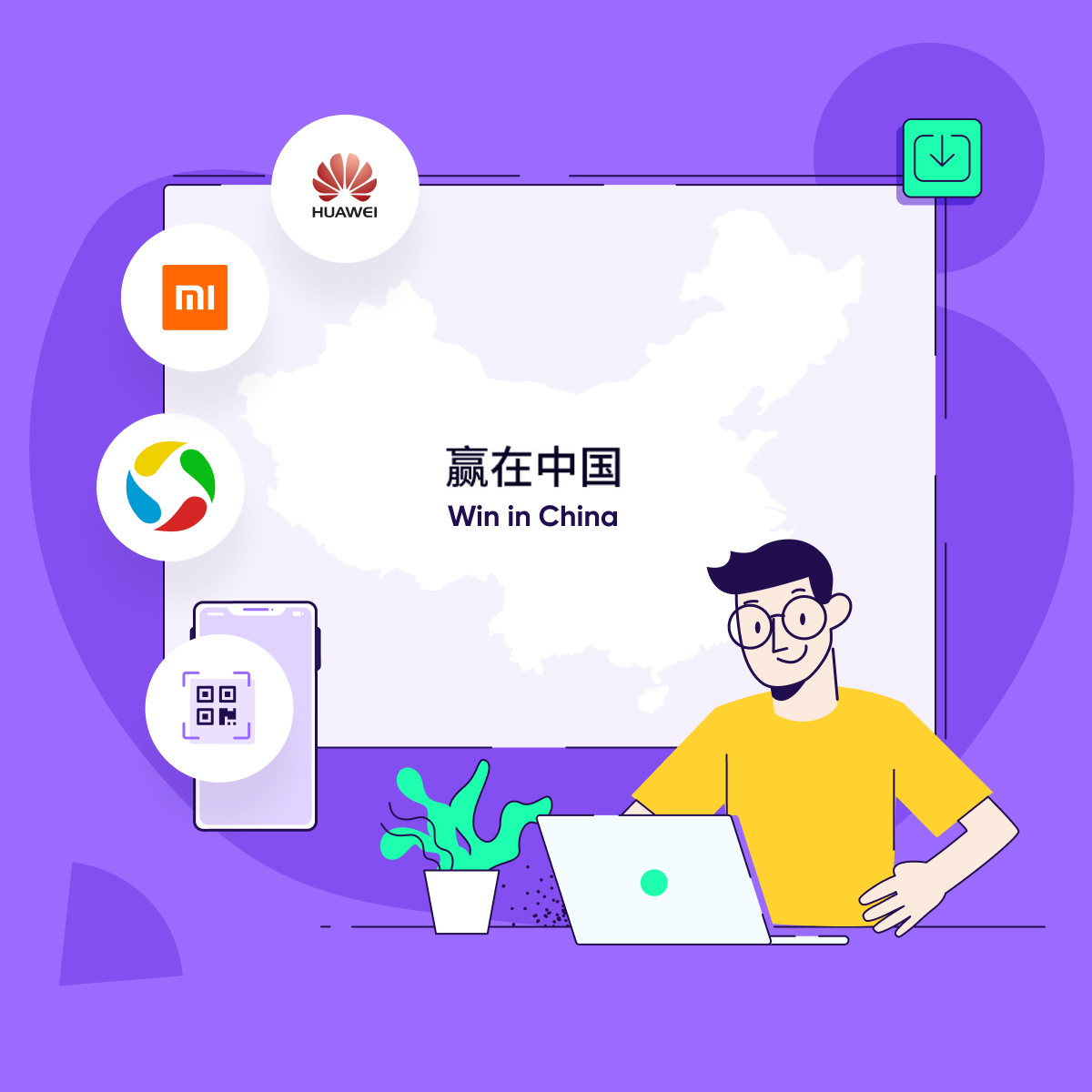
3 main challenges for apps entering China and how to overcome them

In China, nearly 1 billion people connect to the Internet with their mobile devices. The sheer size of it means mobile apps cannot ignore this mega-market, especially as it shifts from a focus on quantity to quality.
China is now entering what is known as the “second half of the Internet game.” The first half was marked by high-speed user growth; the second is marked by the growth in the number of quality users, the result of the country’s economic surge, and an ever-expanding middle class.
The average Chinese user has over 60 apps on their mobile device, spending 5.1 hours a day consuming and creating content. Usage leads to revenue. A PWC 2019 survey found that no less than 86% of China’s population uses mobile payment apps—the highest in the world, by far.
On top of that, China’s Internet infrastructure is entering the 5G era, further improving the experience and generating greater demand for mobile apps.
Globalization has made China a land of massive opportunities, but the market is also incredibly complex and challenging.
This blog will sum up the three main challenges.
The China APPortunity: Trends, strategy, and insights into the Chinese app market
1. Measurement challenge: A different animal altogether
In China, measuring and attributing iOS installs mostly works the same way it does outside of China. However, Android is completely different on all fronts.
While China is home to the largest number of connected users in the world, the fact that hundreds of 3rd party Android stores replace the single Google Play store (remember, Google does not operate in China) makes app install promotion and measurement a significant challenge.

Releasing your app in a single store is not an option unless you have an incredibly strong, established brand that will draw players to that store. Most developers have to upload different APKs to each Android app and pay for each download no matter if it’s an organic or non-organic user.
Attribution providers like AppsFlyer can overcome these challenges by:
- Implementing attribution based on OAID
- Using device IMEI as an alternative to GAID in devices with Android API version 28(Android 9) or before
- Preparing APKs with unique identifiers to detect Android store hijacking
- Configuring attribution links that are recognized within China
A few things to keep in mind about APKs:
- Many Chinese developers set up an in-house APK packing tool to improve the efficiency of preparing dozens of APKs for each Android store and each release of a new version of an app. There are existing vendors that provide APK packing tools.
- Be aware of the different types of Android stores. Android stores can be divided into two types—mobile device manufacturer-owned stores (hereafter referred to as OEM stores) and stores owned by internet giants, which are referred to as third-party stores.
- Beware of fraud. The cost-per-download model results in the Android APK hijacking phenomenon, which puts the entire accuracy of attribution data at high risk. Attribution providers can solve this problem.
2. Legal and bureaucratic challenges: Legally transfer your app’s data outside of China
For mobile marketers, another challenge is often rooted in balancing the need for privacy and security with the enormous opportunity presented by the growth in available data. To do that, you’ll need to adhere to China’s cross-border transmission requirements, but what does that mean exactly?
China has strict regulations to avoid data generated in the country to be hosted outside of China. Therefore, foreign apps are not allowed to send the data generated in China to a server overseas (for example, Apple‘s iCloud service has a stand-alone server in China).
Beyond the issue of storage, there are also regulations that relate to the transfer of data outside of China. In order to ensure a free flow of data, the app’s data controller or processor needs to conduct a data security assessment and submit a report to several government departments that handle the cross-border transmission of personal information and important data.
It is a requirement imposed by the CSL (The Cybersecurity Law of the People’s Republic of China), which is the government body in charge of setting implementation standards.
Last but not least, before launching your app in China you need to obtain a license. Often, multiple contracts must be signed prior to launch, particularly with games (for example ISBN, International Standard Book Number)
So, make sure that you:
- Learn about China’s cross-border transmission requirements, and closely evaluate CSL compliance before entering the Chinese market.
- Prepare licenses for your apps, including a Software copyright certificate and ISBN. Here is a checklist to follow (download the guide for full details):

3. Localization challenge: It’s not only about language
Product localization demands not just translation but also adapting the app’s features, design, and settings to align with Chinese user preferences.
Different app developers have different perspectives on the extent of product localization. Some build a custom Chinese version of their app, while others are confident that the content, features, design, and creative style of their app is attractive no matter what the region, so they focus on translation. There are success stories with each approach.
Chinese users have different habits as far as payment methods go. As such, credit cards are not widely adopted, while WeChat and Alipay are must-haves.
Furthermore, different Android stores have different payment settings that need to be customized. Gaming apps also need to embed each store’s payment SDK in order to allow for a revenue share. On Android, the ratio varies from store to store.
In July 2019, Tencent Games initiated discussions with Android stores to adopt a 70-30 share ratio instead of 50-50.
- For iOS games, Apple Pay is the only method, and the 70-30 revenue split through Apple’s App Store is the same as it is for the rest of the world.
- For non-gaming apps, developers can integrate with a payment method of their choice (AliPay, WeChat Pay, credit or debit card, and others). AliPay and WeChat Pay are two must-have methods given their market share and users’ habits.
Here are some examples of payment pages inside local apps:

What is the solution?
User preferences vary widely among individuals and cultures.
If you are uncertain about your app’s suitability with respect to Chinese users’ preferences, rely on data. Leverage your attribution data in your product or marketing analytics suites using pre-configured integrations that include local platforms.
For an in-depth look at the above challenges and much more, The China APPortunity is a must-read guide for mobile app marketers who are considering entering the Chinese market.
It covers the following:
- Latest market insights, many based on Chinese sources
- Strategies for seizing new opportunities and overcoming challenges
- How China’s Internet landscape differs from other regions
- Step-by-step instructions on how to set up an app in China
- Success stories from Gismart, Lightricks, SKYROCKET, and Ubisoft




